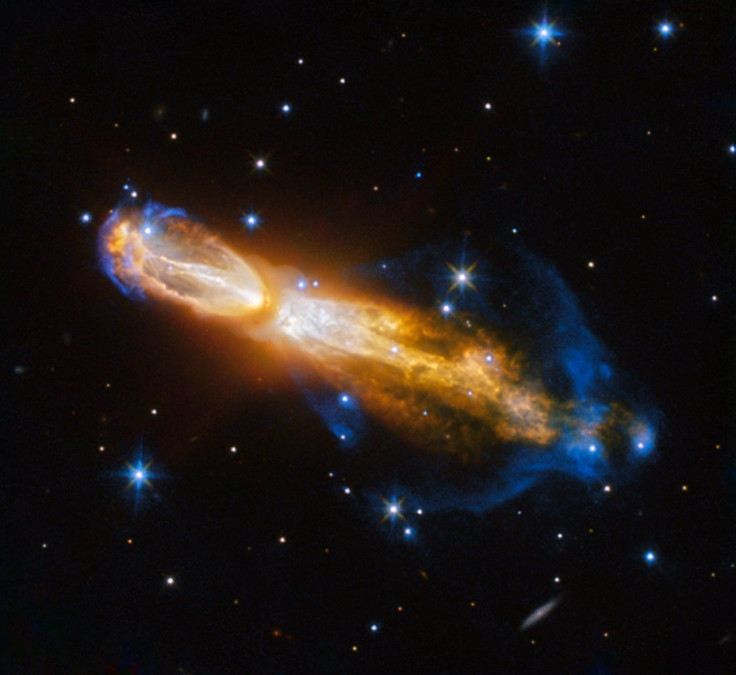‘Rotten Egg’ Nebula: Hubble Captures The Death Of A Star 5,000 Light-Years Away

Astronomers using the Hubble Space Telescope have captured a stunning new image of the Calabash Nebula — a cloud of gas and dust located roughly 5,000 light-years from Earth in the direction of the Puppis constellation. The image of the nebula, which is better known by unappetizing nickname — the “Rotten Egg Nebula” — was released by NASA and the European Space Agency (ESA) Friday.
“This image...shows the star going through a rapid transformation from a red giant to a planetary nebula, during which it blows its outer layers of gas and dust out into the surrounding space,” the ESA said in a statement accompanying the image. “The recently ejected material is spat out in opposite directions with immense speed — the gas shown in yellow is moving close to one million kilometers per hour (621,371 miles per hour).”
The nebula’s unappetizing moniker stems from the fact that it has a high sulphur content — something that, if we could smell it, would make it stink of rotten eggs.
In the photograph, a red giant star can be seen transforming into a planetary nebula — a structure that, despite its name, has nothing to do with planets and is basically the “last hurrah” of a dying star.
“Astronomers rarely capture a star in this phase of its evolution because it occurs within the blink of an eye — in astronomical terms,” the ESA explained in the statement. “Over the next thousand years the nebula is expected to evolve into a fully-fledged planetary nebula.”
This is the fate that awaits our star. Approximately 5 billion years from now, when it begins to run out of fuel and casts off its outer layers of gas, the sun will briefly be surrounded by a colorful envelope of gas that will eventually seep away into the vast void of the cosmos.
So why are these structures called “planetary” nebulae if no planets are involved in their creation? The misleading name was coined by the 18th century astronomer William Herschel, who, having just discovered Uranus, thought the objects resembled gas giants. We continue to use the misnomer out of convenience.
© Copyright IBTimes 2024. All rights reserved.





















